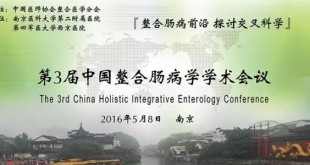文章标题:Diversity and structure of soil bacterial communities in the Fildes Region(maritime Antarctica)as revealed by 454 pyrosequencing
中文标题:应用454焦磷酸测序技术对菲尔德斯地区(南极地区)土壤细菌群落多样性和结构的研究
文章关键字:antarctica, 16S rRNA gene, bacterial communities, soil geochemical property, molecular ecology
研究领域:环境微生物
分析物种及采样方法:土壤微生物,采集土壤表层土(0-5cm)
高通量测序平台:Roche 454
测序区域:16S V1-V3
引物名称及序列:533R (5’-TTACCGCGGCTGCTGGCAC-3’)和8F(5’-AGAGTTTGATCCTGGCTCAG-3’)
样本数及分组:12个土样,4组
涉及微生物数据库:SILVA
研究背景:
南极气候非常恶劣,其简单的生态系统极易受到气候变化、人类活动等干扰因子的影响。作为土壤养分循环的主要驱动者,陆地微生物群落在无冰区很容易受到海洋脊椎动物如企鹅、海象的影响。近年来随着气候的变暖,无冰的区域将扩大,企鹅、海象将逐渐增多,人类活动将更加频繁,陆地微生物可能会发生变化,因此很有必要了解南极地区无冰区土壤微生物和人类、动物之间的关系。
迄今为止,科学家们已经通过传统的隔离方法和分子方法,对南极陆地系统的土壤细菌群落进行了研究。最近,罗氏454高通量测序方法也用于土壤细菌群落多样性的研究。但南极陆地系统绝大多数的细菌群落还需要进行进一步的研究。据我们所知,目前还没有采用高通量测序方法对人聚居地、企鹅聚居地和海象聚居地土壤中的微生物进行研究。
菲尔德斯半岛是南极地区最大的无冰区,人类活动频繁,企鹅和海象也比较常见。因此在该地区采用454高通量测序技术,对人类聚居地、企鹅聚居地、海象聚居地和原始区域土壤细菌群落多样性和结构进行研究。
主要研究结果:
4种类型土样中,土壤细菌多样性最大的是企鹅聚居地土壤,其次是原始土壤、人类聚居地土壤和海象聚居地土壤。4种类型的土样中都含有丰富的变形菌门、放线菌门、酸杆菌门、疣微菌门。4种类型土样的化学性质和细菌群落的结构存在显著差异。4种类型土壤中,热袍菌门、蓝藻、纤维杆菌门、耐辐射嗜、绿菌门在丰度上存在显著差异。在4种类型的土样中,Gaiella, Chloracidobacterium, Nitrospira, Polaromonas, Gemmatinonas, Sphingomonas和Chthoniobacter占主导地位,而Chamaesiphon, Herbaspirillum, Hirschia, Nevskia, Nitrosococcus, Rhodococcus, Rhodomicrobium和 Xanthomonas则在丰度上存在明显差异。通过基于距离的冗余分析发现,pH、磷、有机碳、有机氮是影响土壤细菌群落分布的最主要因素。





英文摘要:
This study assessed the diversity and composition of bacterial communities in four different soils (human-,penguin-, seal-colony impacted soils and pristine soil) in the Fides Region (King George Island, Antarctica) using 454 pyrosequencing wiht bacterial-specific primers targeting the 16S rRNA gene. Proteobacteria, Actinobacteria, Acidobacteria, and Verrucomicrobia were abundant phyla in almost all the soil samples. The four types of soils were significantly different in geochemical properties and bacterial community structure. Thermotogae, Cyanobacteria, Fibrobacteres, Deinococcus-Thermus, and Chlorobi obviously varied in their abundance among the 4 soil types. Considering all the samples together, members of the genera Gaiella, Chloracidobacterium, Nitrospira, Polaromonas, Gemmatinonas, Sphingomonas, and Chthoniobacter were found to predominate,whereas members of the genera Chamaesiphon, Herbaspirillum, Hirschia, Nevskia, Nitrosococcus, Rhodococcus, Rhodomicrobium, and Xanthomonas varied obviously in their abundance among the four soil types. Distance-based redundancy analysis revealed that pH(p<0.01), phosphate phosphorus (p<0.01), organic carbon (p<0.05), and organic nitrogen (p<0.05) were the most significant factors that correlated with the community distribution of soil bacteria. To our knowledge, this is the first study to explore the soil bacterial communities in human-, penuin-, and seal-colony impacted soils from ice-free areas in maritime Antarctica using high-throughput pyrosequencing.
作者姓名及期刊: Neng Fei Wang, Tao Zhang, Fang Zhang, En Tao Wang, Jian Feng He, Hui Ding, Bo Tao Zhang, Jie Liu, Xiang bin Ran, Jia Ye Zang
原文链接地址:http://journal.frontiersin.org/article/10.3389/fmicb.2015.01188/full

 微基生物 您自己的微生态研究团队|专注微生态研究与应用
微基生物 您自己的微生态研究团队|专注微生态研究与应用






